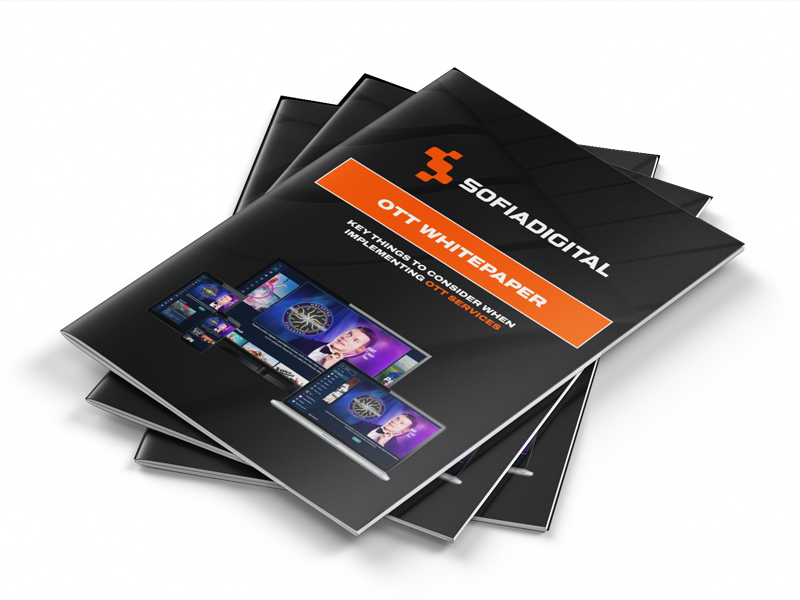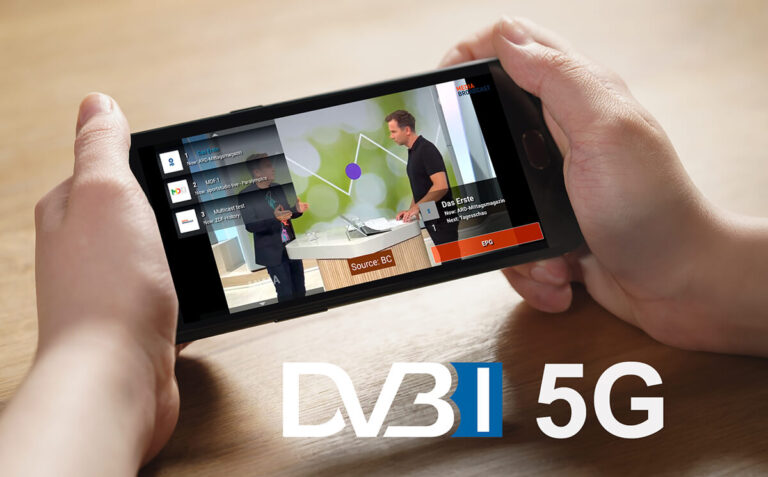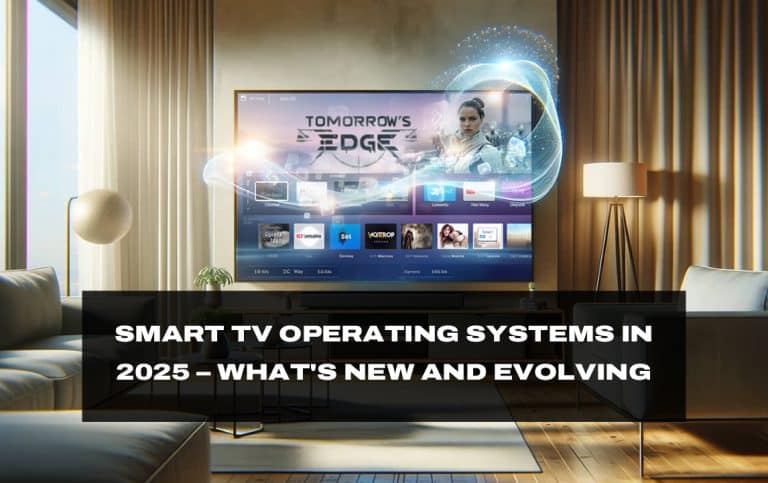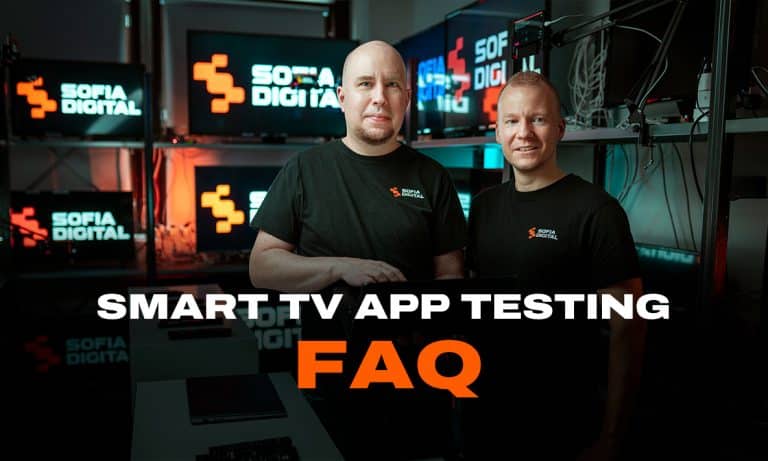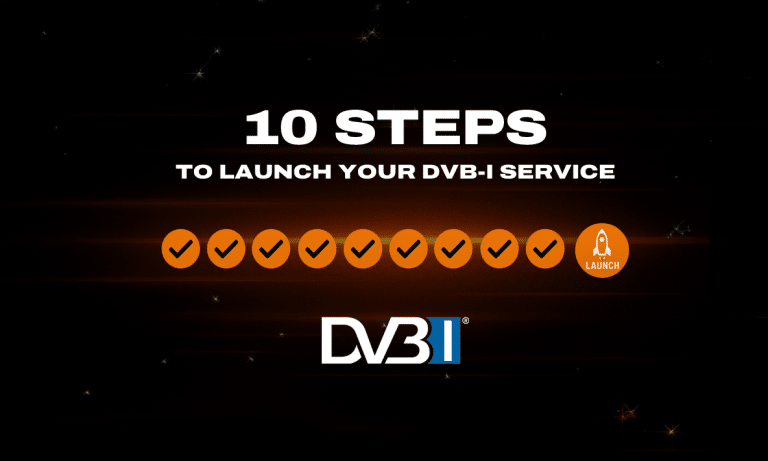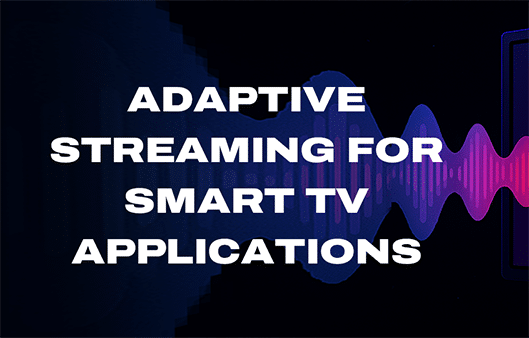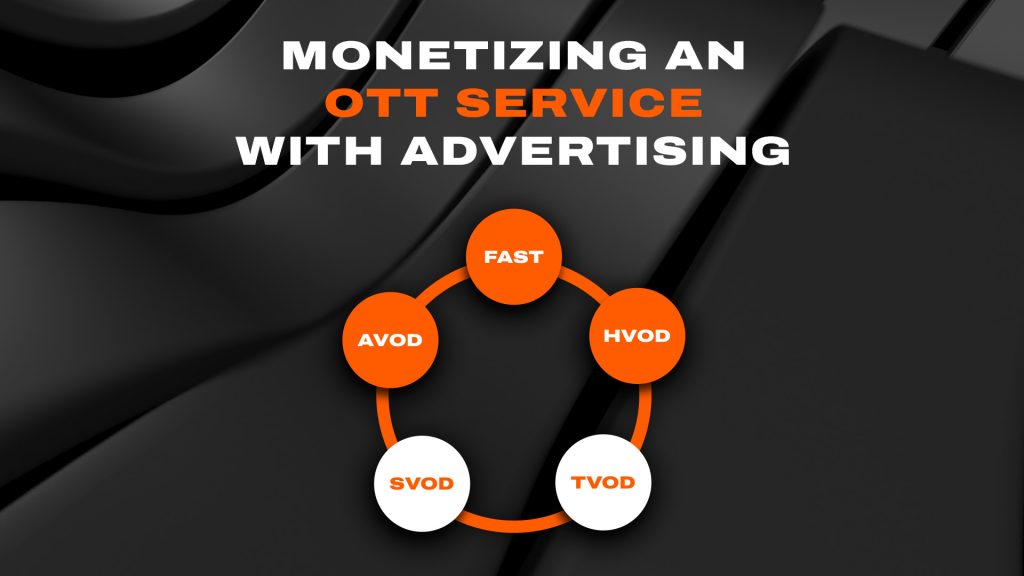
How do you go about monetizing an OTT service with advertising? You don’t need to choose between SVOD or AVOD, you can do both.
OTT means Over-the-Top, and it refers to TV and video services that are provided to devices like Smart TVs, tablets, mobile phones and PCs. Wherever someone can connect their device to the internet, they can view OTT content. However, as an OTT operator, you don’t just want viewers, you need a way to make money. Advertising is a good way to do this, but first you need to have enough viewers to attract the advertisers.
Making money with OTT services
OTT Monetization models
SVOD (Subscription Video on Demand)
With SVOD, customers pay a regular subscription fee to access content. SVOD services like Netflix may offer different subscription levels that give viewers different options depending on the price, with the most expensive, Premium, subscription offering the highest video quality and most viewing options. SVOD is well suited to services that have popular shows with loyal fans – just one show might be enough to make them take a subscription.
TVOD (Transactional Video on Demand)
With TVOD, users pay a one-time fee to watch specific content. For example, renting a movie or watching a live event. TVOD models are ideal for exclusive content, and they can also be provided in addition to subscription content in SVOD services. Note that effective Digital Rights Management (DRM) is especially important with exclusive content.
AVOD (Advertising-based Video on Demand)
AVOD content is free to watch using advertising to generate revenue. Advertisers use analytics to track how effective their ads are, and the number of ad impressions and amount ad engagement will influence how much advertisers are prepared to pay. AVOD is ideal for independent content makers without large financial resources because advertising enables them to publish their content for free on an OTT service. The more popular their channel becomes, the more money they can make.
FAST (Free Ad-Supported Television)
FAST provides free-to-watch TV content and it uses advertising to generate all its revenue. This type of service has been growing in popularity over the last few years and most SMART TV device makers provide their own FAST services. Although FAST is a type of streaming OTT service, the content it provides is linear and it is broadcast on a selection of channels according to a schedule, so the user experience is like traditional lean-back TV. In the FAST model, advertising revenue is shared with the content providers. The more viewers consume content, the more ad revenue is generated.
HVOD (Hybrid Video on Demand)
HVOD combines paid and ad-based models to provide a lower cost subscription to customers that also includes some advertising. Service providers may offer various levels of subscription with prices that depend on how many ads are shown per hour. The more the viewer is prepared to pay, the fewer ads they watch.
PVOD and BVOD
You might see also PVOD and BVOD acronyms what are special use of the above categories. BVOD is similar to other VOD services, but it involves content that comes from the traditional TV broadcasters, as for example catch-up TV services are offering. PVOD is variation of TVOD to offer most valuable content, as for example Hollywood movies.
Due to the current economic situation, OTT companies are looking for new ways to monetize their services and increase their revenue. At the same time, customers are cutting down the number of subscriptions and looking for lower cost options. This is why advertising is becoming an increasingly important revenue stream.
Many SVOD services are now adding HVOD/hybrid paid models in which customers can pay a lower subscription fee in return for accepting some advertising. It is predicted that by the end of 2024 all major SVOD services will have launched an ad-supported subscription option and over 50% of viewers will use AVOD services. It is also worth noting that although AVOD services are free to watch, providers are becoming more assertive in their monetization strategies. For example, the world’s largest AVOD service, YouTube, is trying to implement a complete ban on ad blockers, denying users access to the service unless they accepted ads. At the same time YouTube is trying to attract users to subscribe to YouTube Premium paid service.
How do you introduce ads to an OTT service?
Adverts can be placed in several ways in OTT content, most typical creatives are audio/video ads for example, pre-roll, mid-roll, in-video and post-roll. Depending on the device, it may also be possible to place companion ads as banners next to the video or different shapes of banners as overlays. When viewers see or click any of these ads, the advertisers pay the revenue share for your OTT service.
If you have an existing SVOD service and you plan to introduce an advert supported model, you may like to update your subscription model. For example, you could replace your current basic ad-free subscription with a paid subscription that includes ads, or you could even offer a completely ad-supported basic subscription. Note that ad-supported subscriptions should not include a download option, otherwise viewers can bypass adverts simply by downloading the content. Other things to consider are whether you want to provide ad-supported content at the same resolution as fully paid content – the higher the resolution, the higher the bandwidth and the higher the cost – and whether you want to limit how many devices users are permitted to watch subscription content on.
Technical considerations of OTT advertising
If you do decide to implement advertising with your OTT service, then there are several practical things that you need to consider. You will need to integrate Ad Tech Platform that typically comes with an ad serving system and advertising analytics systems– analytics are always an important part of monetization that include revenue sharing models. You will also need to test your ad serving integration to ensure that it delivers the right ads to your viewers in the correct formats, at the right time, without any glitches. If the ads do not work, advertisers will not stay in your service.
In practice, you should use a single ad serving system for all devices and applications. However, you will need to carefully consider the differences and compatibility of the ad formats (creatives) you serve with various devices and applications, especially TV-screens. You should also test that all ads you want to show work with all the devices your service reaches. Beside the Ad Tech solution that include the analytics for impression and error tracking, you should have your own service to monitor quality analytics and usage that should include also tracking of the ad serving for your own metrics.
Analytics can also be used to evaluate the profitability of your service. For example, you can measure how much bandwidth a show uses and how much revenue it generates, to do cost vs income calculations. The more you monitor your service and its usage, the more opportunities you will find for improvement and improving the customer experience.
Economic considerations
The economics of paid content are the opposite of advertising-based content. Paid services are most profitable when the customer spends the minimum time using the service, and every minute the customer watches costs you more. However, advertising-based services are the most profitable when the customer spends the maximum time using the service with as many videoplays as possible, and every advert they watch increases your revenue. You need to find a profitable balance between the different business models.
Because OTT services are provided to online devices, it is possible to provide dynamic ad insertion and ad targeting to ensure the ads are more relevant to the user. The more relevant the ad, the more the viewer is likely to act on it and engage with it. For example, ads can be served based on the video currently being viewed, as well as past viewing habits and favorites. In addition, they can be targeted based on the user’s location, the device they are using and the time of day. Depending on the privacy regulations in your market, more personalized demographic targeting may also be possible. Analytics can also be used to select ads that generate more viewer engagement.
Whichever type of targeting you use, service providers must have a consent management system to be able to work with targeted advertisement solutions and to ensure compliance with privacy regulations in each market they operate in, for example, with the GDPR in the EU.
Summary
- There are two main monetization models for OTT services: paid services and advertising-supported services
- The importance of advertising-supported models is growing rapidly
- If you plan to introduce ad-supported option for existing SVOD service, you may need to update your subscription plans
- Your preferred OTT partner can help you to select and integrate AD Tech solution that will fit into your OTT service
- Make sure your ad server supports ad formats for all the devices your OTT service reaches
- Rigorously test your Video Player with the different ad profiles and campaigns to ensure it performs flawlessly
- Use analytics to measure video and ad playback performance
- Use analytics to measure the user behaviour and profitability of your service
- Make the most of ad targeting possibilities, while respecting privacy regulations
Sofia Digital supports all advertising and subscription models. Get in touch to find out more about how to get started with advertising for your OTT service.
DOWNLOAD OUR OTT WHITEPAPER
Unlock the potential of OTT services with our informative whitepaper. Get insights into successful launches, expansion opportunities, backend and advertising integration, viewer satisfaction, and more. Download now and take the first step towards a profitable OTT service with our expert advice.
